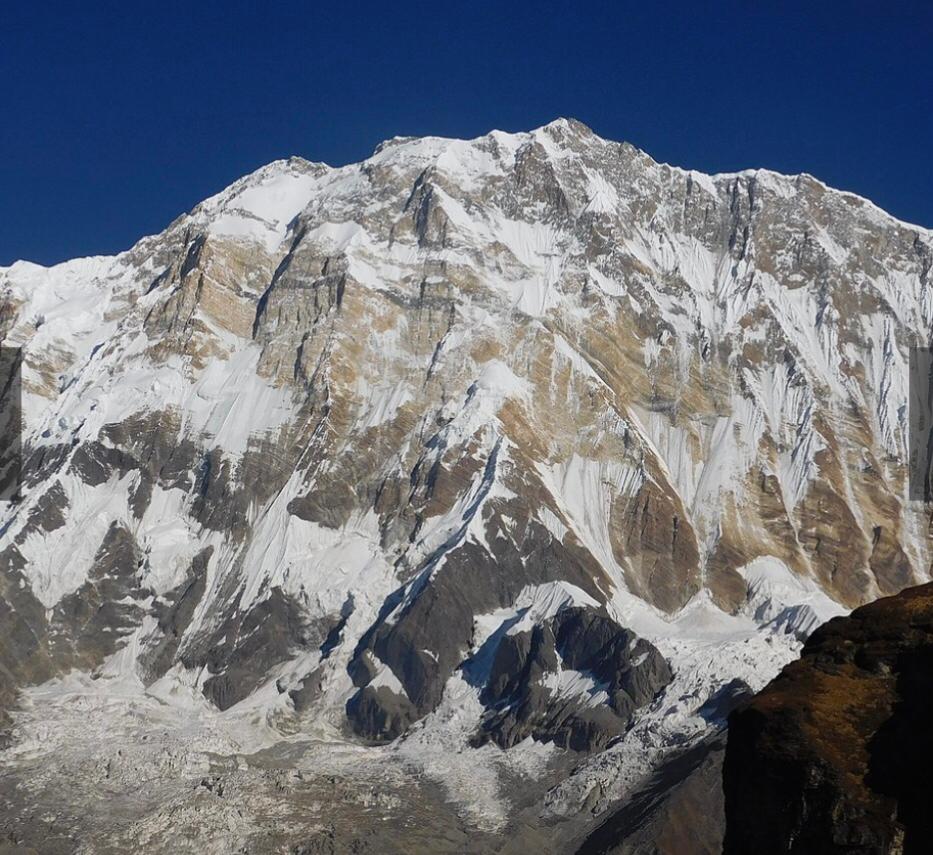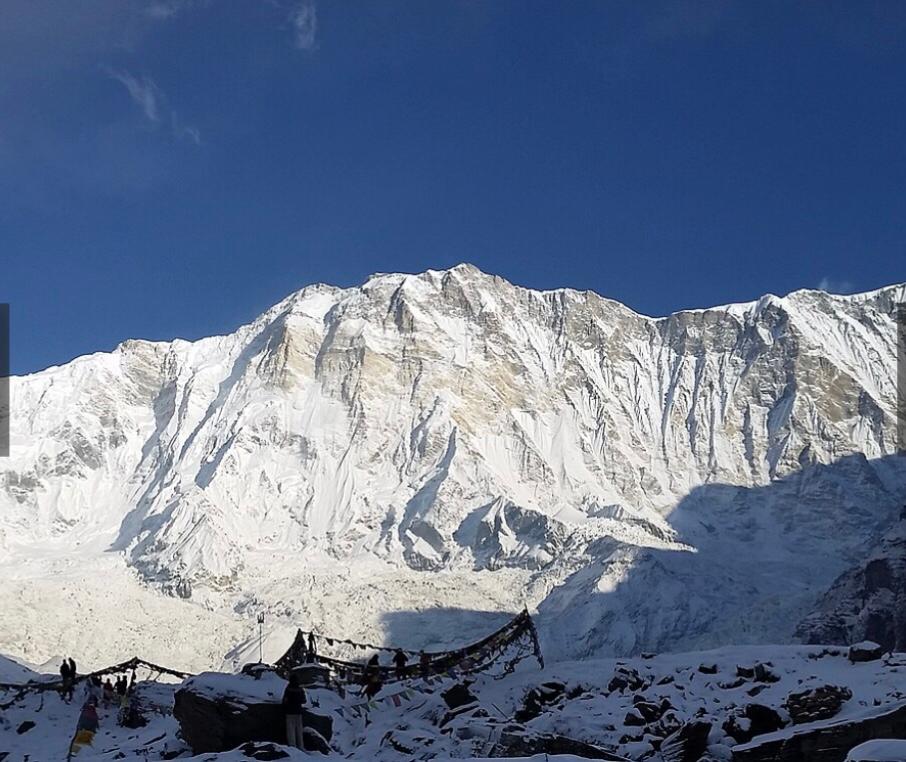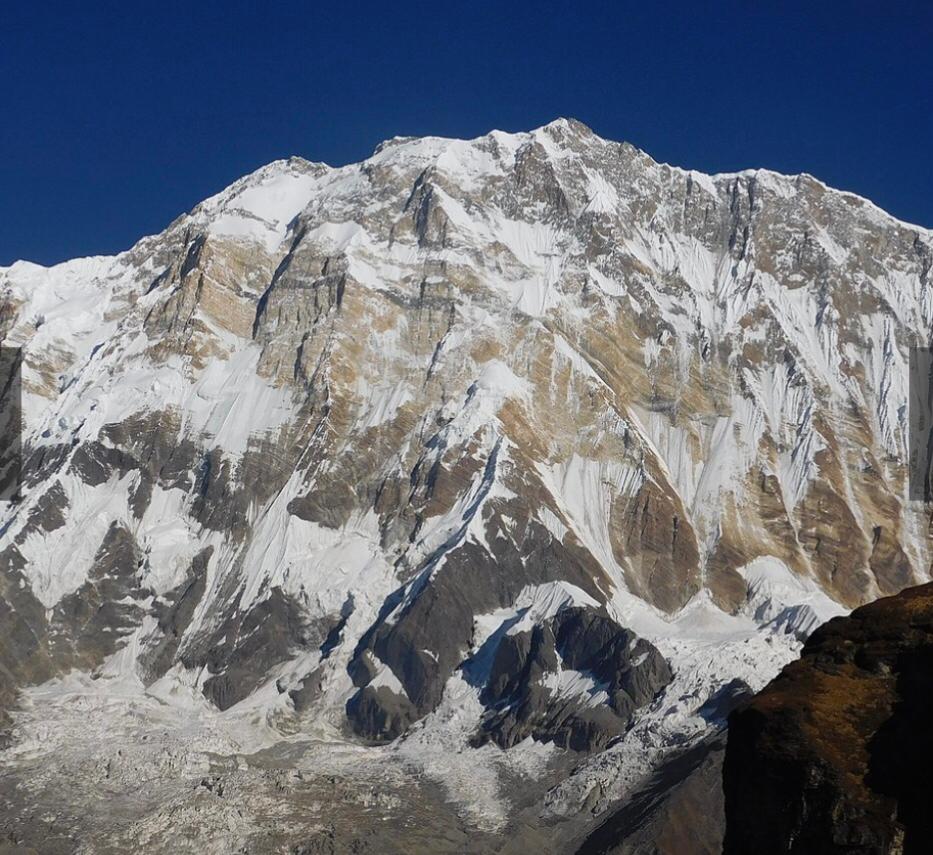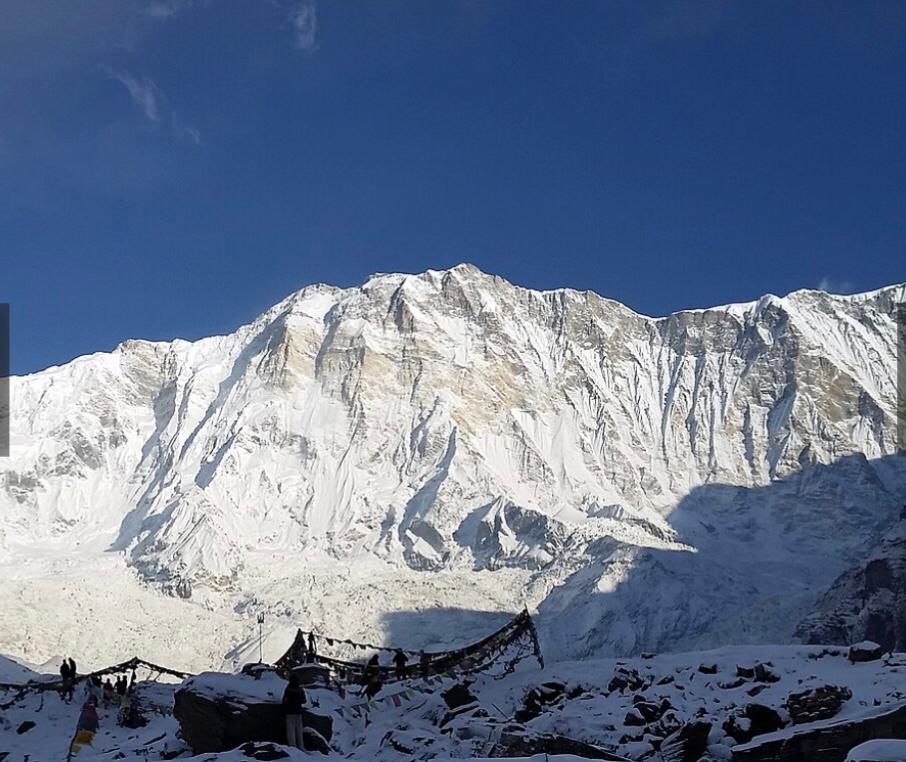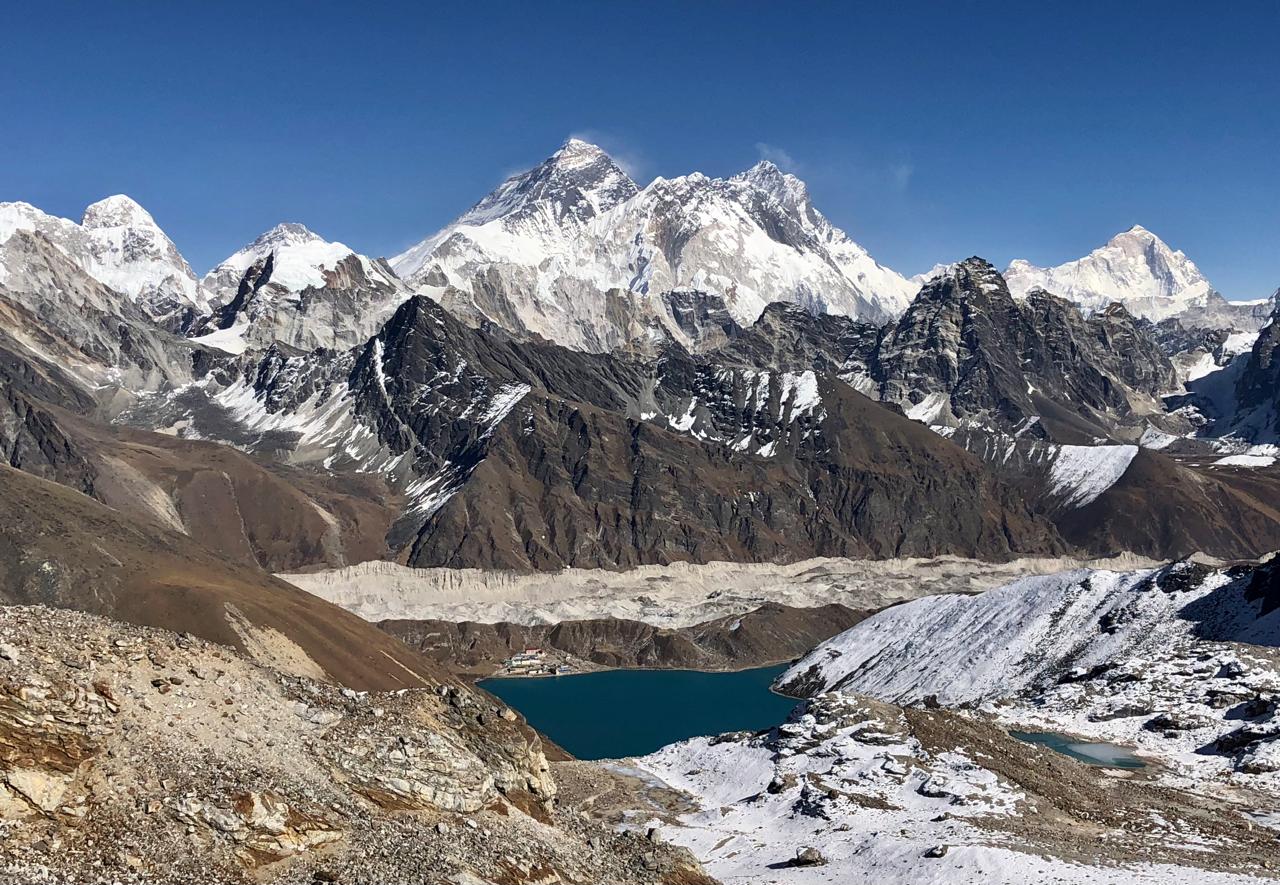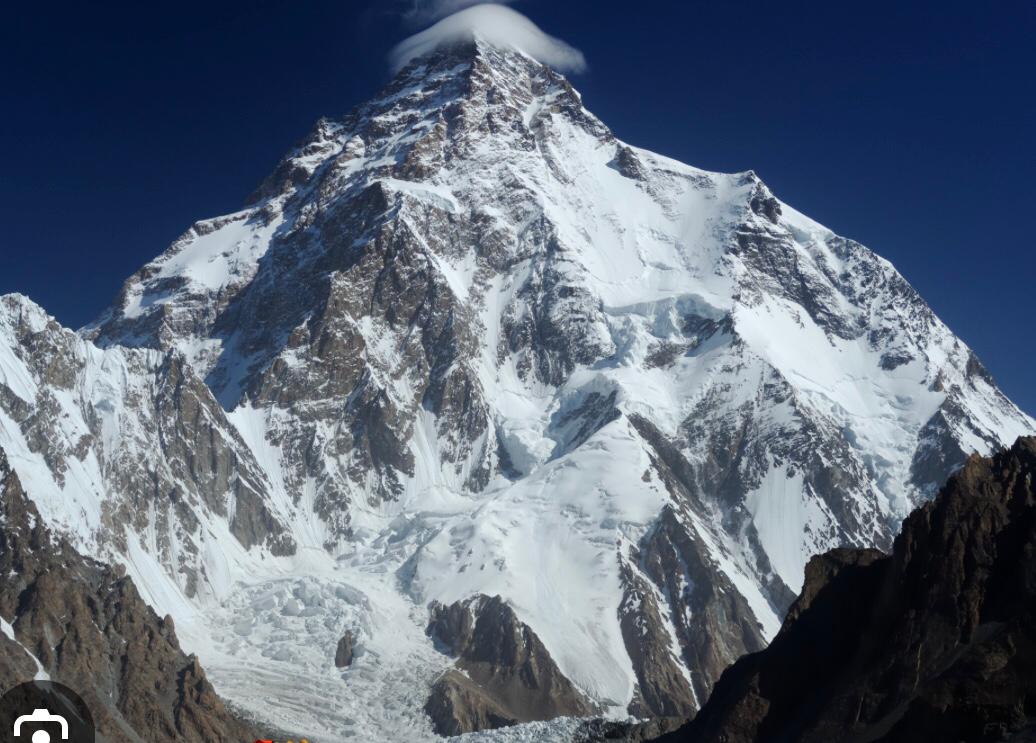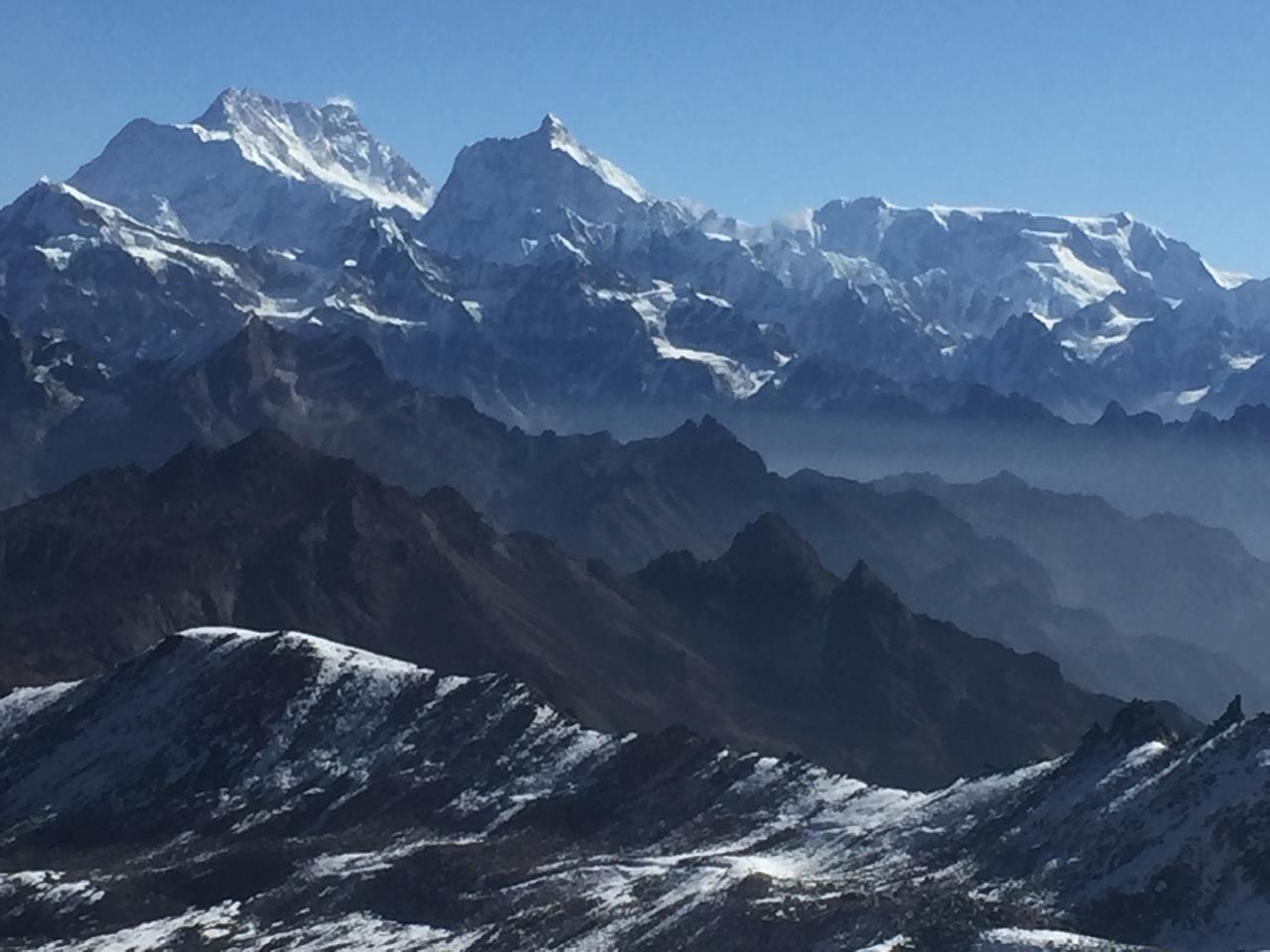Annapurna I is the 10th highest peak in the world, with an altitude of about 8,091 meters. It is a series of mountains that stretch over 55 meters in length, with the highest point being Annapurna I. Located in a great setup at the east of a canyon cutting through the Himalayas by the Kali Gandaki River, which separates Dhaulagiri and Annapurna, this mountain is one of the most difficult and dangerous to climb due to frequent avalanches and difficult climbing routes.
The Annapurna Expedition is a 53-day climbing expedition. It takes about 32 days to complete the summit push, climbing up and down from the north Annapurna Base Camp. The rest of the days are spent trekking the amazing and beautiful trails of the Annapurna region in Nepal. We start at Nayapool, following the trekking route through Ghorepani and Poon Hill, reaching Lete. From Lete, we leave the area and head west, passing through Thulobugin, Hum Khola, and Miristi Khola, until we reach the Annapurna North Base Camp. There will be two high camps above the base camp. The summit will leave you breathless, offering beautiful views from a high altitude.
This challenging Annapurna I expedition requires careful preparation, including dealing with the icefall and crevasse hazards, acclimatization to cope with oxygen levels at high altitudes, and navigating fixed ropes and snowstorms. The weather conditions are unpredictable, and the avalanche risk is a constant concern. Our full board services provide personal tents and food prepared by the climbing Sherpas, along with essential expedition gear such as handheld radios and other communications tools for the mountain. Camp rotations, ice climbing, and managing altitude sickness are integral parts of the expedition. Sherpa support and rescue operations are always on standby due to the extreme cold and the demands of the trek.
The approach to Annapurna Base Camp is an additional trekking bonus, offering spectacular views of extraordinary peaks like Dhaulagiri, Tukuche Peak, Nilgiri, Varaha Shikhar, Annapurna I, Annapurna South, Annapurna III, Machhapuchhre, Annapurna IV, Annapurna II, and Lamjung Himal. The trek passes through locations like Tatopani, Ghasa, Thulobogin, Thulobogin Pass, and Mristi Khola, where climbers can visit these places and enjoy the entertaining moments amidst the backdrop of the magnificent Himalayas.
Trip Notes:
Best Time to Trek & Climb:
-
Spring (March-May): Ideal for clear skies and stable weather conditions, offering the best conditions for trekking and climbing.
-
Autumn (September-November): Another excellent season, with dry conditions, providing stunning views of the Annapurna range and surrounding peaks.
-
Winter (December-February): For those seeking fewer trekkers and a more challenging experience, though the cold and weather conditions can be harsh.
Permits Required:
-
Annapurna Conservation Area Project (ACAP) Permit
-
TIMS (Trekkers' Information Management System) Card
-
Annapurna Expedition Climbing Permit
Experience Needed:
-
Basic mountaineering skills (using ice axe, crampons, ropes, and harness).
-
High-altitude trekking experience and physical fitness are essential to handle the challenging terrain.
-
Prior trekking experience, especially in high-altitude conditions, is highly recommended.
Acclimatization & Altitude Sickness:
-
A gradual ascent with several rest days is crucial to acclimate to the increasing altitude.
-
Proper hydration, rest, and medications like Diamox are recommended to prevent altitude sickness.
-
Listen to your body, take breaks, and seek help if any symptoms of altitude sickness appear (headaches, nausea, dizziness).
Route Overview:
-
Day 1-3: Arrival in Kathmandu, expedition preparation, and a drive to Pokhara.
-
Day 4-12: The trek begins from Nayapul to Annapurna Base Camp, crossing various beautiful villages and forests.
-
Day 13-45: The climbing period, which includes progressively higher camps for acclimatization and summit attempts.
-
Days 46-49: Descend back down to base camp, followed by trekking down to Tatopani and Pokhara.
-
Days 50-52: Drive back to Kathmandu and relax before final departure.
Accommodation:
-
Kathmandu: Hotel accommodation on arrival and during expedition preparation.
-
Teahouses: During the trek portion up to base camp.
-
Tented Camps: At various points during the ascent, including the Annapurna North Base Camp and higher camps.
Duration & Camps:
-
Total Duration: 52 days, including trekking, climbing, acclimatization, and return.
-
Climbing Period (Days 11-41): Involves progressively higher camps (5,900 m, 6,400 m, 7,200 m, and 7,500 m), focusing on acclimatization and summit attempts.
-
Summit Push (Days 41-45): Attempt to reach the summit of Annapurna I (8,091 m), followed by a descent.
Safety Tips:
-
Acclimatization: Plan for multiple rest days at higher altitudes to avoid altitude sickness and improve summit success.
-
Follow Guide Instructions: Always follow the guidance of experienced local guides and Sherpas who are familiar with the terrain and the weather.
-
Pack Warm Layers: Weather can change rapidly in the mountains, even in the warmer months. Always pack warm layers and weather-appropriate clothing.
-
Monitor for Altitude Sickness: Common symptoms include headaches, dizziness, and nausea. If these symptoms worsen, it is vital to descend immediately to a lower altitude.
Cultural & Natural Highlights:
-
Stunning Views: The Annapurna Range offers incredible views, including Annapurna I, II, III, Dhaulagiri, Machapuchre, and other nearby peaks.
-
Cultural Immersion: The trek passes through beautiful villages where you can experience local life and culture. Warm hospitality from the Sherpa and Gurung communities is common.
-
Natural Beauty: The trek offers lush forests, high-altitude meadows, and scenic mountain landscapes. The Annapurna Conservation Area is rich in biodiversity, with opportunities to spot wildlife like the Himalayan tahr, snow leopards, and a variety of birds.
